Table of Contents
I’ve grown quite accustomed to using my GS60 as my daily driver over the past year, but I’ve always been interested in the Gigabyte P35X, as it is probably the closest competitor to the GS60.
After my issues with Gigabyte’s Aorus brand, I was a little hesitant to pick one up, but I ended up being able to get my hands on one of these P35Xs to use for the past couple weeks. It’s a Haswell version, so I decided not to do a full write up on it now when Broadwell models are available (and Skylake updates should follow very soon), but since I already own a Haswell GS60, it was a perfect opportunity to do a side by side comparison.
Read on to see what I found out.
BTW, the Broadwell/Skylake models of these two laptops are going to be pretty much the same as the Haswell versions analyzed here, except for the CPU performance/temperatures – so this comparison is still valid, even if you’re looking at some of the newer models.
Spec comparison
| MSI GS60 Ghost Pro | Gigabyte P35X | |
| Screen | -15.6 inch, 2880 x 1620 px resolution, Panasonic IPS, glossy, non-touch
Other options: |
-15.6 inch 1920 x 1080 px resolution, AUO IPS, matte, non-touch
Other options: |
| Processor | Intel Haswell Core i7-4710HQ CPU, quad-core 2.5 GHz | Intel Haswell Core i7-4710HQ CPU, quad-core 2.5 GHz |
| Chipset | Intel HM87 | Intel HM87 |
| Video | Integrated Intel HD 4600 + Nvidia GeForce GTX 970M 3GB | Integrated Intel HD 4600 + Nvidia GeForce GTX 980M 8GB |
| Memory | 16 GB DDR3L | 16 GB DDR3L |
| Storage | 1x 128 GB M.2 SSD SATA in + 1TB HDD 7200rpm + 1 empty M.2 slot | 1x 128 GB SSD mSATA in + 1TB HDD 7200rpm + 1 empty mSATA slot |
| Connectivity | Killer N1525 Wireless AC , Qualcomm/Atheros Gigabit Ethernet, Bluetooth 4.0 | Intel AC 7260 with Bluetooth 4.0, Realtek RTL8168 Gigabit Ethernet |
| Ports | 3x USB 3.0, HDMI v1.4b, mini Display port 1.2, RJ45, mic, earphone, SD card reader | 2x USB 3.0, 2x USB 2.0, HDMI, mini Display port, VGA, RJ45, mic, earphone, SD card reader, Kensington security lock |
| Baterry | 52 Wh | 78Wh |
| Operating system | Windows 8.1 | Windows 8.1/Windows 10 |
| Size | 390 mm or 15.35” (w) x 266 mm or 10.47” (d) x 19.9 mm or .78” (h) | 385 mm or 15.16” (w) x 270 mm 10.63” (d) x 20.9 mm or .82” (h) |
| Weight | 1.96 kg or 4.32 lb | 2.3 kg or 5.07 lbs |
| Extras | Multi-colored backlit keyboard, trackpad, HD camera | Backlit keyboard(white), trackpad, HD camera, removable CD/DVD bay with HDD adapter |
Design
As you might have read in my previous reviews, the design for the GS60 is pretty stellar. Most of the casing is made from a magnesium alloy and some parts still use plastic, such as the bezel and portions of the back edge. The overall feel to the laptop is pretty solid, although the screen lid has some flex to it if you adjust it from the corners. All the corners are properly rounded though and there are no major gaps, except maybe for the gap between the lid and palm rest, when the unit is closed.
Looks wise, the GS60 is pretty nice, but there are some flashy corners and ridges that MSI added for an unique look. Then there’s the branding and stickers, which I find absurd. The glowing dragon logo on the lid is an eyesore (to me at least) and the amount of stickers on the bottom and branding on the palm rest makes me think that I’m advertising for MSI.
The P35X is also a very solidly built machine, with a mostly aluminum chassis. Like the GS60, the bezel is plastic, but unfortunately so is the entire bottom shell. There’s no avoiding it because they have a removable bay for RAM replacement, as well as many vents, so it’s understandable that it’s not made from metal, but still kind of disappointing. The keyboard is removable, so its frame is also made from plastic. In short – lots more plastic on the P35X than on the GS60.
The look of the P35X is very bland, which I actually kind of like. There’s a Gigabyte logo on the lid and another below the screen, but there’s practically nothing on this machine that screams “Gamer”.
Some things I don’t like are the hinges though. They are very sturdy, but the way they open up exposes two bowls which will inevitably trap dust and other stuff if you leave your lid open for long periods of time.
The build quality of the P35X certainly feels solid, but there are a couple areas where they blew it. First, on my unit (and many others in the forums), the trackpad is uneven. My lower right edge sticks up slightly and catches my finger when running to it from the palm rest. Second, since the keyboard is removable, it’s fixed onto the system by clips and screws. The screws are too short though, which pull the keyboard to tight in some spots. This causes the keyboard to bow in some areas. Finally, due to the large width HDD they chose, there is a massive bulge on the left side of the trackpad. It’s totally obvious and not ideal to look at, but it doesn’t affect my usage.
Bottom point, it’s tough to pick a winner between the two in this category. The P35X feels more sturdy, but their use of plastic and the bulges certainly lose some points in my book. The GS60’s mostly metal, but they have a weaker feeling lid and all that flare. Weight might also play a part in your decision, with the GS60 weighing 3/4 of a pound less than the P35X. Add in the power bricks and the difference in weight increases to 1.1lbs. There are concessions to be made on both machines, that’s for sure.
Keyboard
The GS60 uses a SteelSeries brand keyboard which is an absolute treat to use. I’ve had no issues using it as my daily driver over the past year. The key travel and feedback is appropriate and the keys are all adequately spaced apart. Most of the keys are placed correctly, but there are some you have to get used to, such as the Delete and Windows keys.
The keyboard is backlit, has multiple levels of brightness and is RGB, so you can change the color. For the most part, the colors are uniform, but there are some colors that aren’t, such as white, where it will look slightly yellow or even green on some keys. Overall though, it’s a nice look and switching between colors is pretty simple.
The P35X keyboard is not quite up to par with the GS0. The keyboard is a removable component and is about what you would expect from one. It’s all plastic and borderline flimsy. The keys themselves have decent travel, but the feedback on the keys leaves something to be desired. After using it for a month, I still make some typos from hitting keys too quickly. There’s also a cheapness feeling to the keyboard, which I don’t like. Not to mention the oil sheen that’s building up on the keys from only having it a month.
On the plus side, Gigabyte mounts it down properly with 4 screws, eradicating all traces of flex. The drawback is the screws pull so hard that the keyboard actually bends in those spots. This exposes some obvious hills and valleys in the layout. There is a fix to this, which is using longer screws (or loosening the existing ones), but the drawback is a little added keyboard flex. At least if it breaks or gets too dirty it’s easy to replace.
The P35X keyboard is also backlit, but white is the only color option. There are also only two levels of brightness, adjustable by hotkey or software. There’s not much else notable about the keyboard, except that all the keys are in the ideal spots. I wouldn’t change a thing with that.
Overall, MSI wins big time in the keyboard department. In fairness, I refrained from using the GS0 for the past month and only used the P35X. I really struggled the first week, but eventually got used to it. I typed the first half of this post with the P35X and the second half with the GS60. I made far less typos with the GS60 and I definitely missed typing on it over the past month.
At first, I attributed it to the key travel and feedback, but I noticed something more once I started using the GS60 again. The keyboard is MUCH closer to the front edge on the GS60! I had to put them side by side and take a picture just to see how drastic the difference is. So with the P35X, my forearms start to dig into the edges and I have to keep my left arm off to the side in order to type properly. On the GS0, both of my wrists rest on the corners and I’m able to move with more agility.
Trackpad
As I’ve stated in my full review, the GS60’s trackpad has come a long way. The drivers and firmware have been updated over the years and it’s come to a point where I can be very productive in using it. The texture is a little rough and plastic feeling – but it tracks my movements accurately and registers multi-touch actions on the first try, for the most part.
My main gripe with the GS60 trackpad is it’s a little small and it’s in very close proximity to the lip of the palm rest. This is obviously because they have the keyboard so far down(which I appreciate more now that I know why). Still, it takes some getting used to and I have to say I’m pretty satisfied with it after using it for so long.
Like the GS60, the P35X also uses an Elan trackpad. It’s a little bigger in size and is spaced further away from the lip. The texture is a lot smoother than the GS60’s, which is both good and bad. It’s good because my fingers glide across it almost like it’s a Macbook trackpad, but the bad part is it’s almost indistinguishable from the rest of the palmrest. I really wish they recessed it a little so I could tell when I got to the edge. It would also eliminate the problem with it sticking up in the corner, like on my unit.
On top of these, I’ve been kind of struggling with the P35X’s trackpad. At low speeds, it’s decent, but if you turn the mouse pointer speed up it gets really jumpy. This is almost the exact issue I had with the GS60 before all the firmware updates. Maybe a firmware update will fix it, but not yet. Then there’s the issue with registering touch gestures. Scrolling is fine, but I’ve had to repeat some gestures multiple times on many occasions. A couple times I had to give up. In fairness, I’ve gotten better at using the proper sensitivity to get them to work, but it took me a while.
It could be I just need more time with the P35X, but I have to give the trackpad to the GS60, when comparing the two. MSI’s is a little cheaper feeling, but at least they fixed the issues through drivers and it works properly. The P35X’s trackpad has potential, but just needs a little TLC from the supplier.
Screen
Both manufacturers offer different resolution screens, some of them being very similar. For the FHD versions, MSI uses a Samsung PLS panel while Gigabyte uses an AUO IPS panel. They both have 94% sRGB coverage, however the GS60 is a little brighter at maximum, measuring 300 nits. The Gigabyte panel only measured 266 nits at maximum, even though the panel is advertised to output 300 as well. Contrast ratios are the same as well, measuring approximately 600:1.
3K screens were also available on both of these. I say were because MSI no longer offers the 3K variant on the Broadwell models. Regardless, both units used Panasonic panels and they are identical in every way, with the exception of the GS60 being glossy and the P35X being matte. The color coverage is 92% sRGB, maximum brightness is nearly 350 nits and the contrast ratios hover around 600:1. In my opinion, this is arguably the best screen out there and it’s a shame MSI no longer offers it.
Finally, the GS60 also offers a 4K option. As I’ve mentioned in my Broadwell GS60 review, I’d steer clear of this one. It’s very crisp, but plagued with mustard colored yellows and is also locked to 48Hz instead of the traditional 60Hz on most other panels. I don’t see any point in spending extra money to have an inferior screen. Hopefully MSI will fix this in the Skylake release (assuming there is one) by reverting back to the 3k screen. At least with 3k, it’s possible to play games. I had little or no luck trying to play games at 4k without turning the graphics settings way down.
Hardware and performance
There’s only a couple similarities between both units, in terms of hardware. They both use the same Intel Core i7-4710HQ and 16GB of RAM. Both support wireless AC and Bluetooth 4.0, but MSI chose the Killer card over Gigabyte’s choice of the Intel AC-7260. The Intel card has been known to have connectivity issues, but I didn’t seem to have any problems in my case.
In the storage department, the GS60 has three storage options. A 128GB SSD and 1TB HDD come standard and there’s an empty M.2 SATA bay for added storage options. The P35X has a similar configuration, but the 128GB SSD is mSATA instead of M.2. Gigabyte goes even a step further though and squeezes in a DVD drive. The best part is it’s removable and they also included an adapter to install another 2.5” drive. This means you can have a total of 4 hard disks! I’ll give Gigabyte a big win here, mainly for having the extra bay, but also for their choice in form factor. Although M.2 is the “new” standard, mSATA is more readily available and there are better options for storage space. If space is a concern, you could add dual 1TB mSATA in the P35X, but would be limited to 2X 512GB M.2 drives in the GS60 (until a 1TB M.2 is ever released, that is).
Probably the biggest difference between the two hardware configurations is the graphics card. The GS60 comes standard with a 970M, with either 3 or 6GB of VRAM. The P35X can also come with a 970M, but if you want to spend the extra money, you can get a 980M with a whopping 8GB of VRAM, which is certainly enough to tackle any game out there. Kudos to Gigabyte for fitting the top-end card in such a small form factor. Unfortunately, MSI could never do the same, mainly because of the cooling system they chose. There are pros and cons to MSI’s cooling system, which I’ll cover later, but the P35X certainly wins in this category as well.
For connectivity, both laptops have HDMI, Mini-Display Port, memory card reader, gigabit Ethernet, headphone and microphone adapters. MSI has 3x USB 3.0 ports, while the P35X has 2x USB 3.0 ports on the right and 2x USB 2.0 ports on the left. Gigabyte also managed to squeeze in a VGA connection, which is great considering most business conference rooms still use it to some extent.
Synthetic Benchmarks
Obviously the P35X model I have on hand is going to outperform the GS60, mainly because of the 980M. Below are the benchmarks I measured for both. For consistency, I used the same Samsung Evo 840 SSD when running all my benchmarks.
| Haswell Gigabyte P35X with Samsung Evo 840 1TB | Haswell MSI GS60 with Samsung Evo 840 1 TB | |
| 3DMark 13 | FS – 8384 SD – 21471 CG – 20809 IS – 104869 CPU: 95C GPU: 88C |
FS – 6666 SD – 18642 CG – 20351 IS – 113698 CPU: 91C GPU: 84C |
| CineBench 11.5 | OpenGL: 49.91fps CPU: 6.93 pts Single CPU: 1.50 pts |
OpenGL: 55.46fps CPU: 6.93 pts Single CPU: 1.50 pts |
| CineBench 15 | OpenGL: 63.33 fps CPU: 635 pts Single CPU: 130 pts |
OpenGL: 94.4fps CPU: 626 pts Single CPU: 128 pts |
| PCMark 8 Conventional | 3157 | 3199 |
| PCMark 8 Accelerated | 3808 | 3873 |
| X264 Benchmark 4.0 | Pass 1: 157.34 fps Pass 2: 37.20fps |
Pass 1: 151.6 fps Pass 2: 38.84fps |
As you can clearly see, the 980M significantly boost the gaming benchmarks. I’m not really sure why the CINEbench results were lower for the P35X, but the other results were consistent with each other, so it’s probably nothing to make not of.
Gaming Benchmarks
Gaming differences were clearly noticeable and pretty much matched up with the benchmarks everyone has posted online. I only tested a couple of games to show the differences in temperatures and framerates when set to equal graphics levels. For the purposes of this test, everything was done in 1080p. Noise levels were measured at head level in a room with ambient noise levels of 15dB.
- Skyrim– 15 minutes of heavy constant movement and fighting. All settings completely maxed out.
- P35X: 60fps, CPU – 87C, GPU – 76C, 40dB fan noise;
- GS60:60 fps, CPU – 85C, GPU – 75C, 40dB fan noise.
- Dragon Age Inquisition– Played 15 minutes of constant movement and battles. Max settings with 2xAA
- P35X: 55-60fps, CPU – 91C, GPU – 83C, 46dB fan noise;
- GS60: 40-45fps, CPU – 89C, GPU – 85C, 42dB fan noise.
Noise and Heat
With regards to noise, both laptops are pretty similar on paper, but there is a pro to each of the designs.
The P35X topped out at 46db for the fan noise, while the GS60 only reached 42db. It’s not too much of a difference, but the actual tone of the fans on the GS60 was a little more pleasant for my taste. It could be because the size of them was so much smaller, but the tone of the GS60 resembles that of a white noise, while on the P35X it was more of a light blender or old school can opener (I’m talking tone, not how loud it is).
At the lowest speeds, the GS60 was quieter than the P35X, with the former measuring 20dB and the latter 25dB.
Because of the dual fans on the CPU, the P35X stays cooler than the GS60 during normal use. I was able to switch the fans into quiet mode and surf the web for very long periods of time with the fan being off. Occasionally the fans would switch on for a short period of time and, because of the tone, I would obviously hear them. Out of the box, the GS60’s CPU fan is always on and at the lowest fan setting, which is around 2800rpm. It blends in and you get used to it, but you definitely will hear it in a classroom setting or a quiet place.
MSI also has a fan tool (which you have to download), but it is not as user friendly as Gigabyte’s. It’s WAY more customizable though, where you can set the specific fan speeds for different temperature zones. I like this, although it’s not as convenient as Gigabyte’s simple settings of: quiet, normal and gaming, which is probably what 99% of people would rather deal with. You can make the GS60 run silently though, which is a plus. Unfortunately the software on the MSI is not as effective as on the the P35X for some reason, as my fan appears to kick on more often when doing simple web browsing. Still, it’s better than what they had before, which was nothing.
Heat management is a different animal on both machines. The GS60 cools the GPU and CPU independently with separate fans and heatsinks for each. The P35X has dual fans that are in series to cool both at the same time. For the P35X, this is required since the 980M cannot be efficiently cooled with just a single fan. The GS60 gets away with the other approach due to having a 970M chip online, but just barely. In a way, I like the GS60 better because there’s only 1 fan on when the GPU isn’t in use. This could be why I got lower dB readings during normal use.
The intakes are another advantage the GS60 has over the P35X. The GS60 draws air in from the top, while the P35X draws it primarily in from the bottom. I like drawing it from the top because I can actually play games without a cooling pad on the GS60. It still gets hot, yes, but it’s not the heat that bothers me – it’s compromising the cooling system. With the P35X, it would get so hot to the point of throttling because my legs would block the intakes, so I was always forced to use a cooling pad.
On the flip side, using a cooling pad on the GS60 is practically useless, while it may give you 1-4C cooler temps on the P35X. Even more important, gaming on an external monitor with the lid closed is not a good idea with the GS60 since the vents would be blocked.
To sum it up, they both are going to make noise, they both get really hot and you’re probably going to want a cooling pad for both, regardless if you turn the cooling pad on or not. At this point, you’re really going to have to identify what kind of user you are and what kind of cooling system works for you. For me, I like the GS60 better because I dislike cooling pads. But I never keep the lid closed with an external monitor and longer silent running isn’t a big deal to me.
Speakers
Both laptops have two down-facing speakers on the front edge. The GS60 has “subwoofers” on the rear edge and the P35X has a single “subwoofer” on the bottom panel. I put subwoofer in quotes because they are merely just extra speakers that handle the mids and aren’t particularly good at handling the lows.
I tested the same song with both machines and I measured the sound levels. The P35X topped out at 80dB and the GS60 topped out at 85dB. In comparison, the P35X got a little distorted at the highest volume levels. The GS60 didn’t suffer as much distortion, but still didn’t sound that great at the highest settings.
I’ll give the GS60 a slight edge in the sound department, although neither machine packs very good speakers. Most people are going to be wearing headphones with these machines anyways, so it probably won’t matter which is better.
Battery life
My battery test consists of using the stock “Power Saver” power profile, 30% brightness(80 nits), WiFi off, Bluetooth off, and running a 720p movie in a continuous loop at full screen with the volume muted. I also turned on Battery Saver mode (in Windows 10).
I start the clock when I’m unplugging the laptop and stop it when the unit performs a self-shutdown. In this case, the GS60 lasted only 2 hours and 57 minutes before shutting down, but the P35X lasted a whopping 5 hours and 30 minutes.
Using Batterymon, I was also able to test the discharge rate at certain conditions and estimate how long the laptop would last under those conditions. WiFi and Bluetooth were on for all situations and the volume was set at 50%. Here are my results:
- High performance, 100% brightness, idle:
- P35X: 16.7W – 4.7 hours
- GS60: 17.7W – 2.9 hours
- High performance, 20% brightness, idle:
- P35X: 14.5W – 3.6 hours
- GS60: 14.5W – 5.4 hours
- Power Saver, 100% brightness, idle, fans off:
- P35X: 16W – 4.9 hours
- GS60: 17W – 3.1 hours
- Power Saver, minimum brightness, idle, fans off, BT off, backlight keyboard off:
- P35X: 10.6W – 7.4 hours
- GS60: 11.5W – 4.5 hours
It’s clear the P35X is the winner in this category. It has the bigger battery, so it was to be expected.
I also suspect the issue with the GS60 is the amount of battery wear you get right out of the box. Most users report 10-15% wear, which makes that 52Wh battery act more like 45Wh.
Upgradability
First thing I’ll start with is the P35X is MUCH easier to upgrade than the GS60. Once you remove all the screws, it’s just a matter of unclipping the cover and popping it off and then you’ll have access to the 2.5” HDD and both mSATA ports. You also have access to the RAM slots, but then again, you could have accessed those by just removing the single screw RAM cover.
The GS60 is a different animal to upgrade. The cover is held on by multiple screws and you also have to remove the plastic hinge cover before it will come loose. There are multiple clips and they are plastic, so you have to be really careful or they’ll break. Once open, you can only access to the 2.5” HDD. To get access to the RAM slots and M.2 drives, you need to completely remove the motherboard. It’s not entirely difficult to do, provided you are very careful. You pretty much have to remove all the ribbon cables, a few screws and undo a couple of wires. Overall, give yourself an hour to get the job done. You should also not count on having a valid warranty anymore if you perform all these.
Price and availability
Both the P35X and GS60 are available on online in multiple different configurations. The Haswell models are becoming scarcer now that the Broadwell models are out. With Skylake around the corner, expect the Broadwell models to be discounted in the near future. Whatever model you choose, the comparison is the same, except for the actual CPU speeds.
Follow this link for the latest offers on the MSI GS60 and this one for deals on the Gigabyte P35X.
In general, at the time of this post, base prices start at $1750 for each 970M version. Adding the 980M for the P35x brings the price tag to about $2000. For added savings on the GS60, you can get a model without the SSD for as low as $1500, but keep in mind that HDD will cripple your performance and adding a SSD later-on in the GS60 is much more difficult.
I’d recommend figuring out what screen choice you want first, because that might drive which model you actually choose. If you want a 3K screen, you’re pretty much going with the P35X because the GS60 only has the 4K option now (unless you find a 3K Haswell somewhere). For many reasons, I would steer clear of the 4K screen on the GS60, as I’ve explained in this review.
As a side note, I’ve done a lot of research on figuring out if the 4K screen can be replaced with a 3K one. In short, it can, but it’s going to cost a lot and sourcing the new cable might prove difficult.
Final thoughts
I’ve been a really happy owner of the GS60 for nearly a year now, and there hasn’t been another laptop that I’ve considered having instead, until now. I gave the P35X a solid month of use and I have to say it nearly convinced me to keep it. In the end though, I’m still going to stick with the GS60 and here’s why.
The build quality differences greatly contributed to my decision. The bulge on the lower left and the uneven keyboard were pretty tough to swallow, even though the keyboard can be a little better if you manipulate the screws. The trackpad sticking up put it over the top though. This is a machine that costs around $2000 so these things need to be near perfect, in my opinion. Sure, the GS60 has minor build quality issues too, but they pale in comparison.
The other major concerns I had were the keyboard and trackpad input. If it was just the trackpad, I could have lived with it, but the P35X keyboard was far inferior to the GS60. It wasn’t just the unevenness, although that didn’t help. The keys just felt a little cheap and I made a lot of mistakes typing on it. Again, this is something I would expect an expensive laptop to nail.
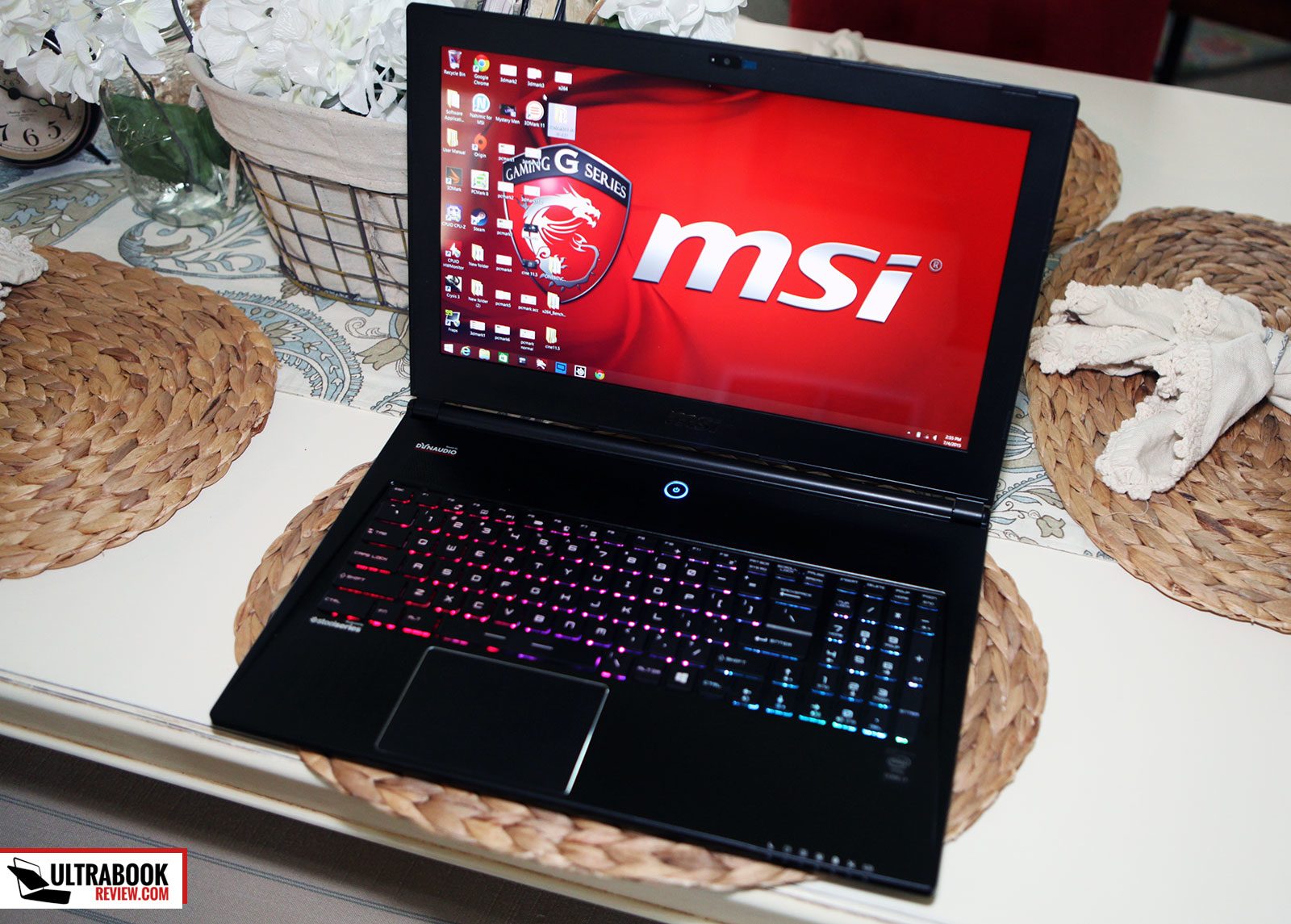
I’m sticking with the MSI GS60 for now, but if you want the more powerful graphics and simpler design and you’re willing to look past a few quirks, the Gigabyte P35X is an option to consider
If I didn’t use this as my daily driver (I don’t use a desktop), I might have considered the P35X over the GS60. The increased gaming performance and the better battery life made it SO tempting to switch. I also really appreciated how much it looked like a “normal” laptop over the gaming look of the GS60. Less lights, glowing logos and ridges are not a bad thing in my book.
Maybe if the P35X fixed one of the issues above, I would have kept it. It really was that close of a decision for me. I may still change my mind in the future, but I’ll decide that with Skylake and Nvidia’s next model. Another plus that will contribute to my future plans is the 3K screen, which the P35x has and the GS60 discontinued. We’ll see what both companies choose in their Skylake models.
That about sums up my comparison. Hopefully this helps you make a better choice. Like I mentioned before, the Broadwell models are pretty much the same as the Haswell models except for the CPU – so the comparison is still valid between the two of them. If you have any questions or if there’s something I missed, please feel free to leave a comment in the section below.

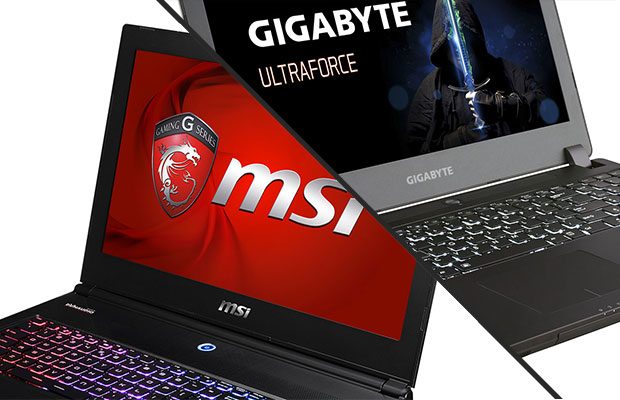
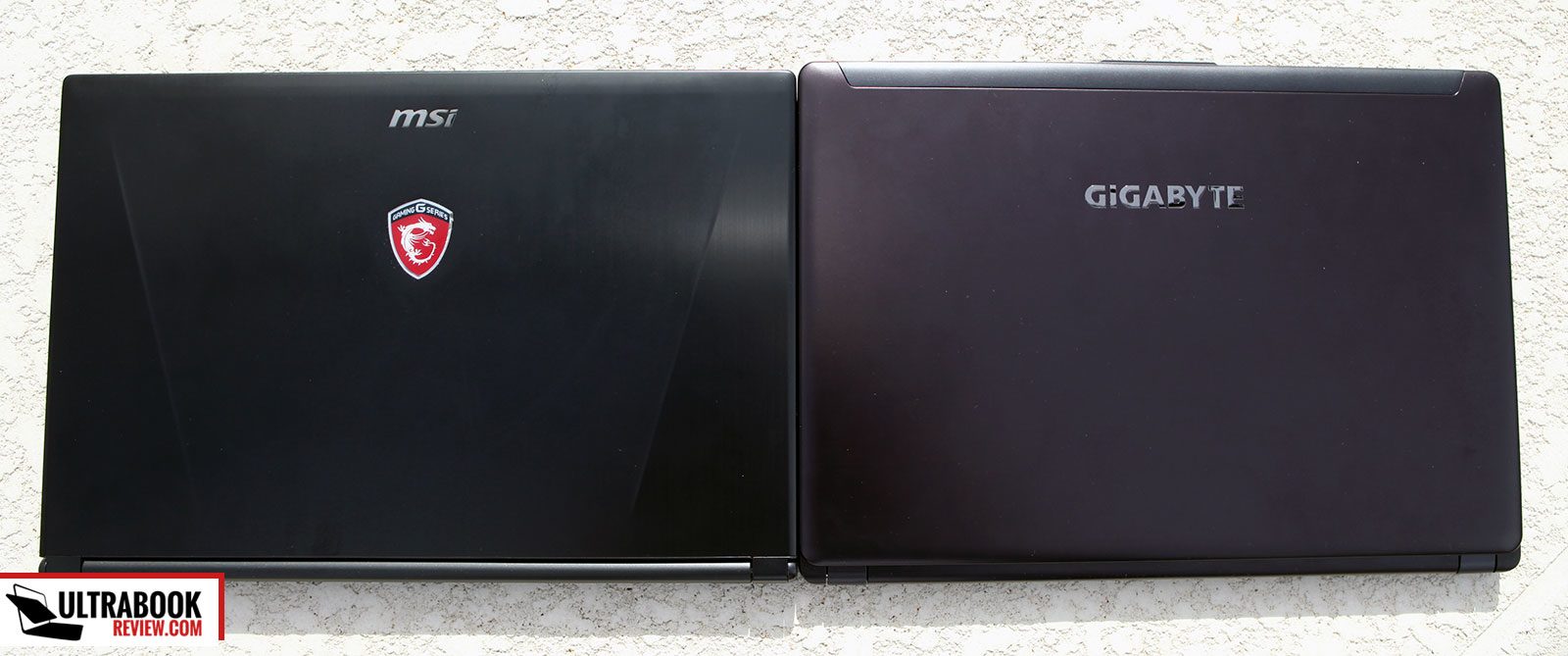
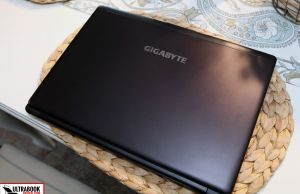
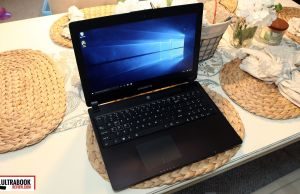
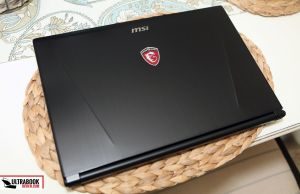
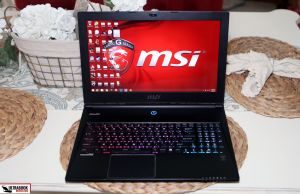
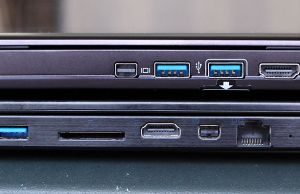
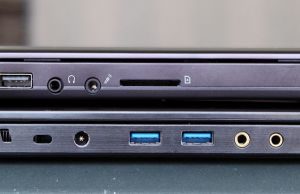
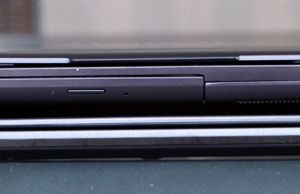
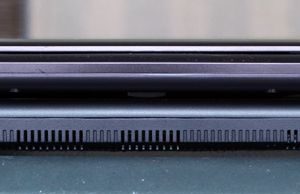
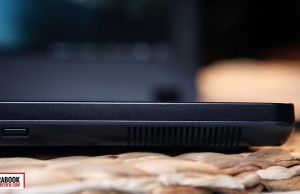
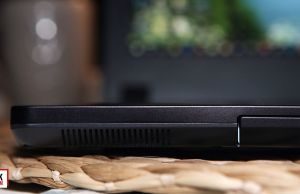
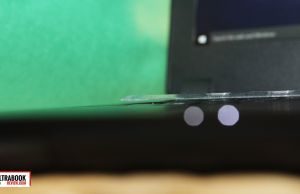

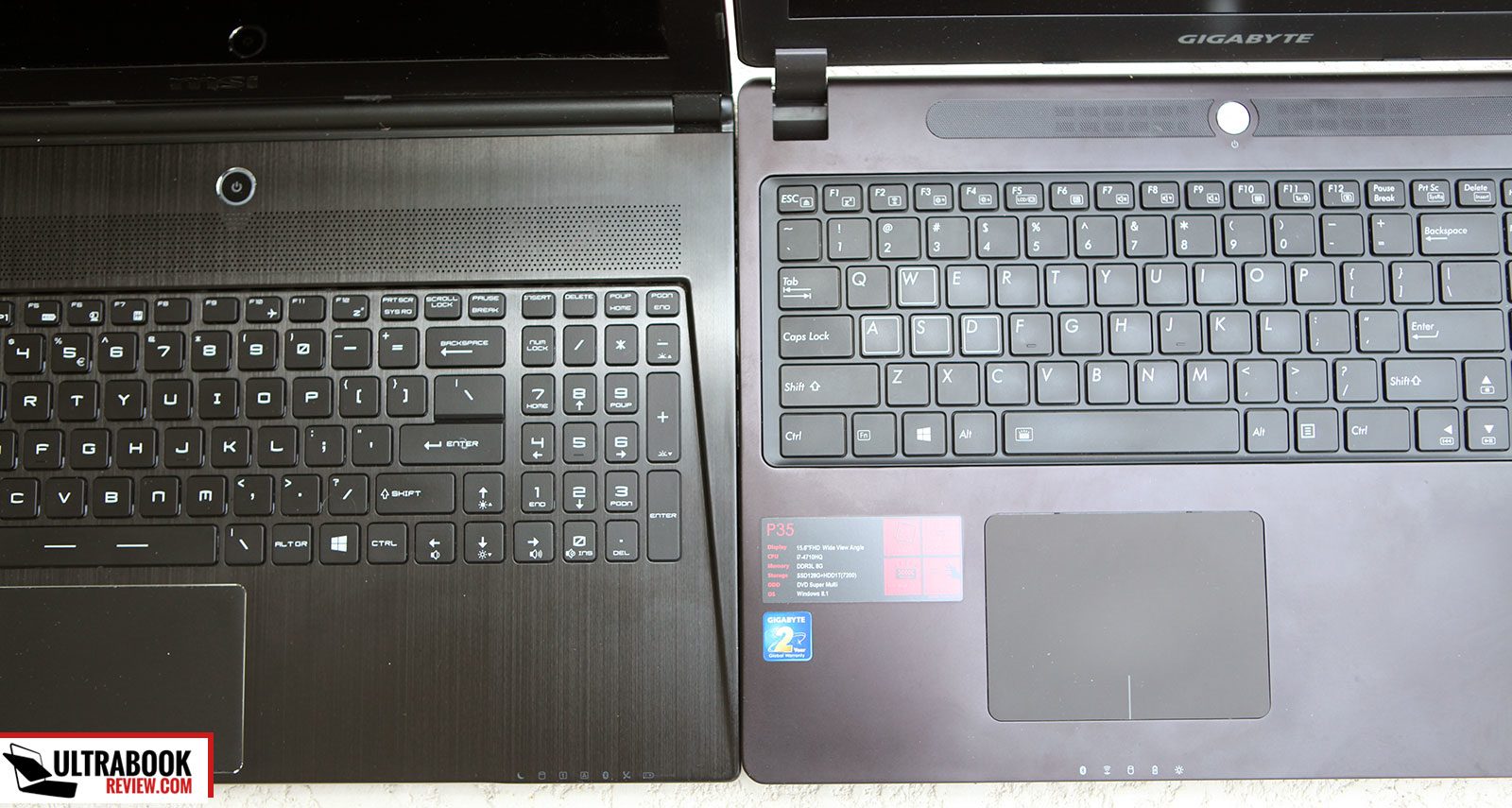
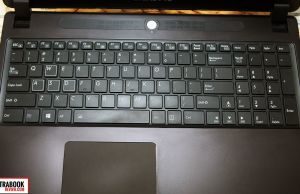

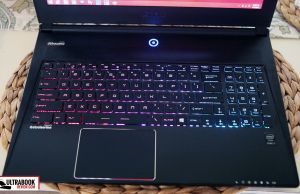

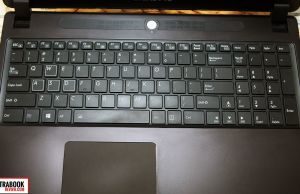
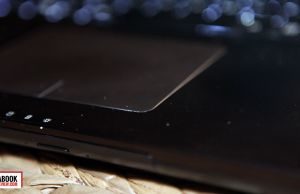
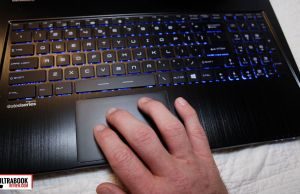
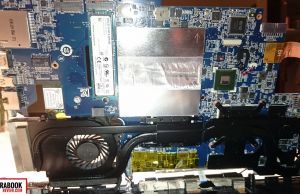
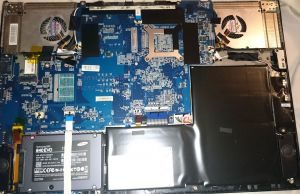
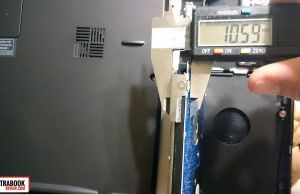
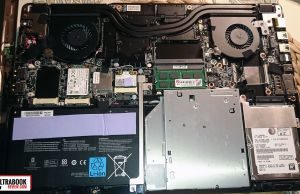



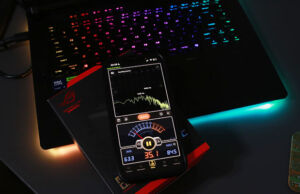
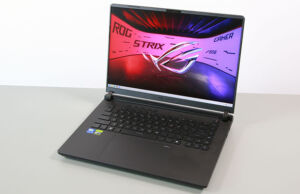
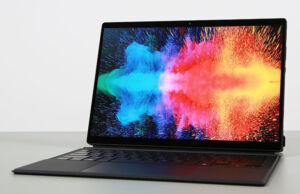




PavelMagnum
September 11, 2015 at 9:13 pm
Thanks for the comparison! I was actually choosing between Gigabyte and MSI a while ago but ended up with 3K MSI Ghost. And never had any doubt about my decision. Well, it hasn’t crossed my mind after reading this review as well.
One important thing you’ve forgotten to mention is GS600 weighs 1 lbs less than P35x and this really delivers in everyday use. The solid built and a lightweight (as for 15″ laptop) construction make it much more user-friendly when it comes to portability. Wish the battery was bigger though, but still allows to work on the go for about 3 hours.
Jisper
February 13, 2016 at 4:30 pm
Thanks for the comparison! I’m having this hard time though….
Actually I need a better battery, and the preference of P35X suits me, but as u said, the keyboard… is that a really big problem? For a university students’ normal use and game
Also some said that GTX980M on a 15inch FHD is useless than a GTX970M, what do u think?
Derek Sullivan
February 14, 2016 at 2:47 am
I just have to be able to type well which I couldn’t do with the P35X unfortunately. So I stuck with the GS60 mainly because of that. The 980M is better than the 970M no matter what the screen though. I’m not sure who told you otherwise and what they meant. They might mean that the 970M will play most FHD games at 60fs but that’s not entirely true for the future. Fallout 4 for example gets about 45-55fps on the 970M where as the 980M will top it out.
If you think you can live without a stellar keyboard for your school needs, the P35X is the way to go. I do think you could certainly get by with it. On the other hand though, I think many could also get by with the 970M too.
Another thing to consider if you’re looking at the Skylake models is the GS60 has a clear advantage in that it has a Thunderbolt 3 port. So theoretically you could attach an external GPU to it and get even more graphics power. Just a thought.
Jisper
February 14, 2016 at 5:59 am
thanks for the advice :) I think it’s better I try the keyboard myself. Still I can’t take the 52wh battery of gs60
BTW, there’s some 970m with 6g ram, like the origin evo15, what do u think?
Derek Sullivan
February 15, 2016 at 3:13 am
The Evo15 is basically a GS60 clone. Almost no differences except branding and services. There might be a difference component here or there. No glowing dragon so that’s a plus in my book.
Zac
March 22, 2016 at 9:05 am
I just want to say this is a really good review and im glad I read it. I bought a P35X V4 (Broadwell 5700hq) in July last year and have been loving it since. The temps and heat are pretty ridiculous though and mine sits with he CPU in the 90s well gaming & very occasionally throttling. The 980m temps are kept nicely under control at 70-80C though. I am repasting mine in a couple of weeks when my Noctua NH paste arrives and supposedly that helps the temps a lot on gigabyte laptops.
Also with the broadwell skews (Which actually perform on par with their 14nm skylake cousins in gaming & benchmarks) you could buy a 980m model for US$1790 on newegg with no SSD, 8gb ram and the 1080p screen, I opted to do this and add 2 Samsung Evo 120gb SSDs myself for ~US$100. The performance of mSATA is slightly lower than the m.2 PCie available in the GS60 but in day to day use with raid0 SSDs your not going to notice really.
Also I note the exact same build quality issues as yourself. A slight bulge on the left of the keyboard and the trackpad being slightly raised on the right, also the top of the keyboard getting rather toasty under gaming load but this is to be expected with such a thin laptop in my opinion.
I love mine and would recommend.